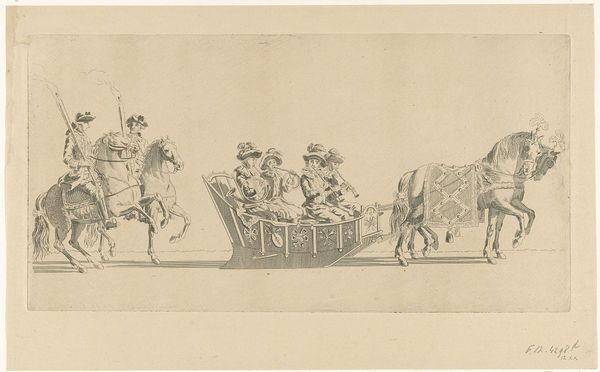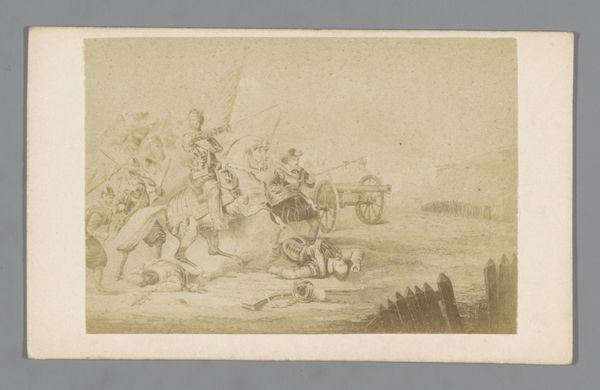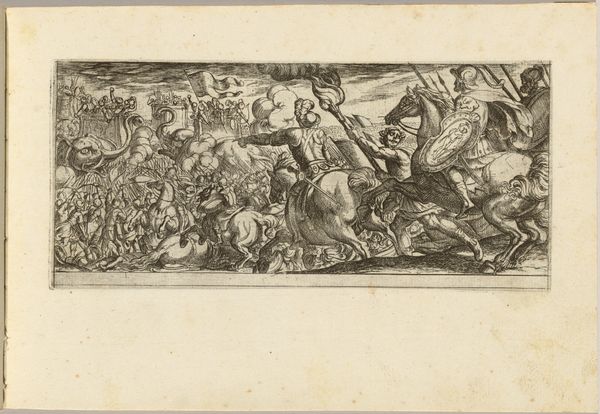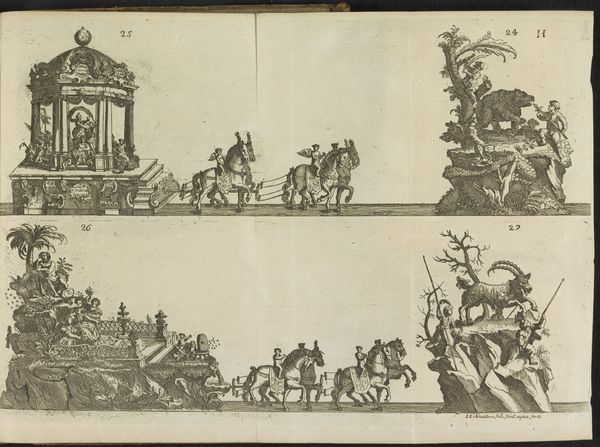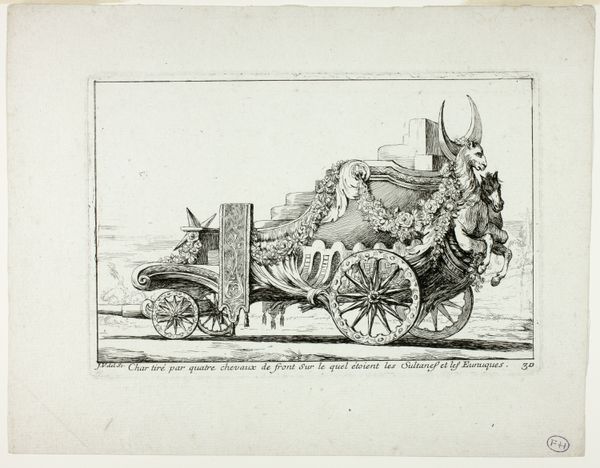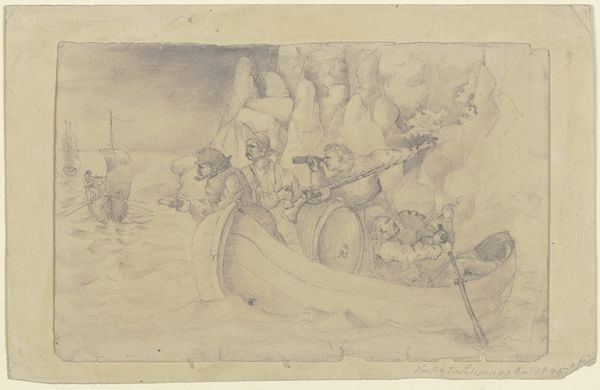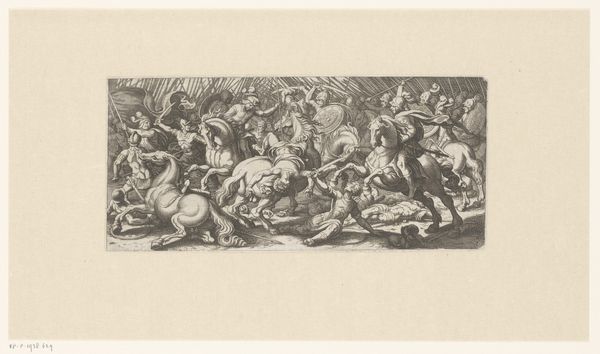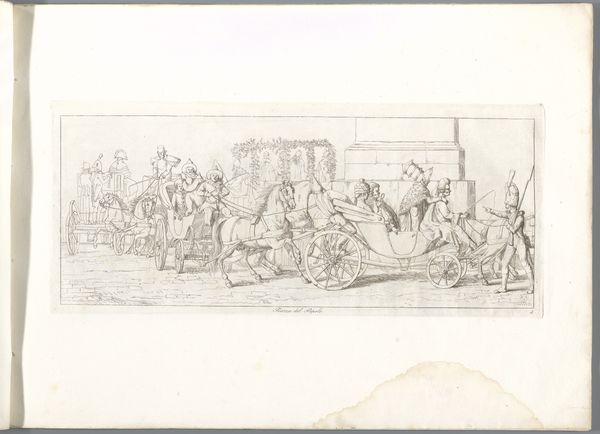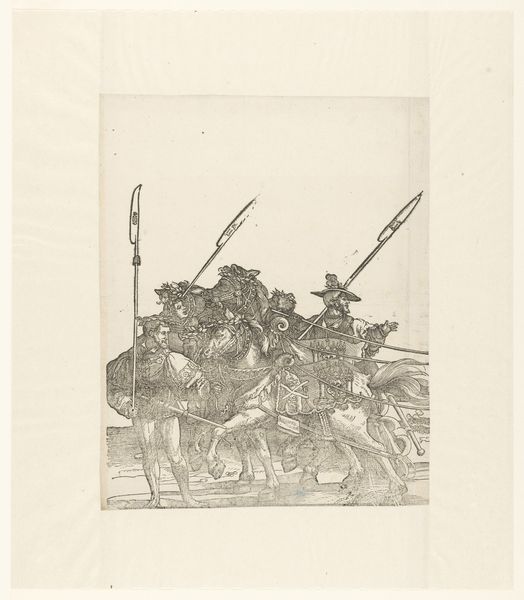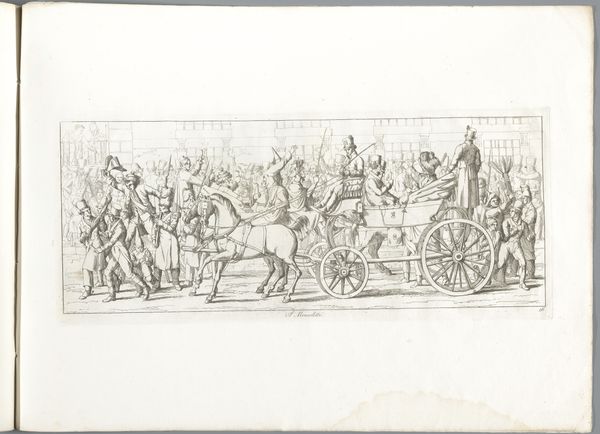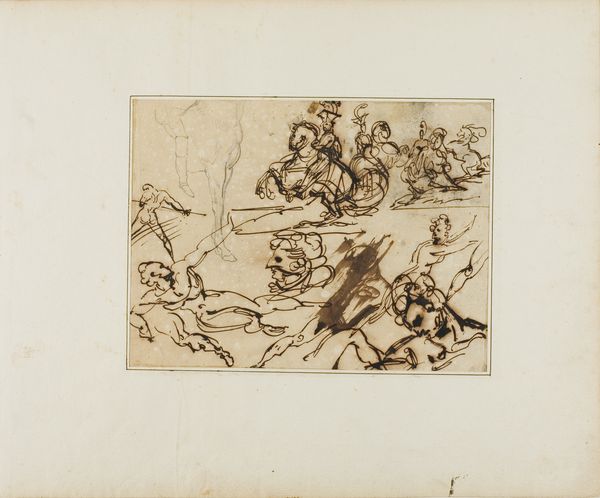
Design for a float, from 'Éloges et discours sur la triomphante réception du Roy en sa ville de Paris ...' by Jean-Baptiste de Machault 1629
0:00
0:00
drawing, print, engraving
#
drawing
#
baroque
# print
#
caricature
#
figuration
#
cityscape
#
history-painting
#
engraving
Dimensions: Sheet: 8 5/8 × 11 13/16 in. (21.9 × 30 cm) Plate: 7 13/16 × 11 in. (19.9 × 28 cm)
Copyright: Public Domain
Melchior Tavernier created this print, a design for a float, in France, sometime in the early 17th century. The print depicts a lavishly decorated float pulled by a single horse. Floats like this were often commissioned for royal entries into cities. These entries were carefully orchestrated events, designed to reinforce the power and prestige of the monarchy. In this context, the float becomes more than just a pretty spectacle. It’s a carefully constructed message, intended to impress upon the public the King's authority. The abundance of classical motifs – the figures in Roman dress, the architectural details – all evoke a sense of historical legitimacy and grandeur. To understand this print fully, we need to delve into the history of the French monarchy, the conventions of royal entries, and the visual language of power in the 17th century. Scholarly resources in the Met's archives can help us unpack its layers of meaning. In doing so, we can gain a richer understanding of art's public role and the politics of imagery in early modern France.
Comments
No comments
Be the first to comment and join the conversation on the ultimate creative platform.

